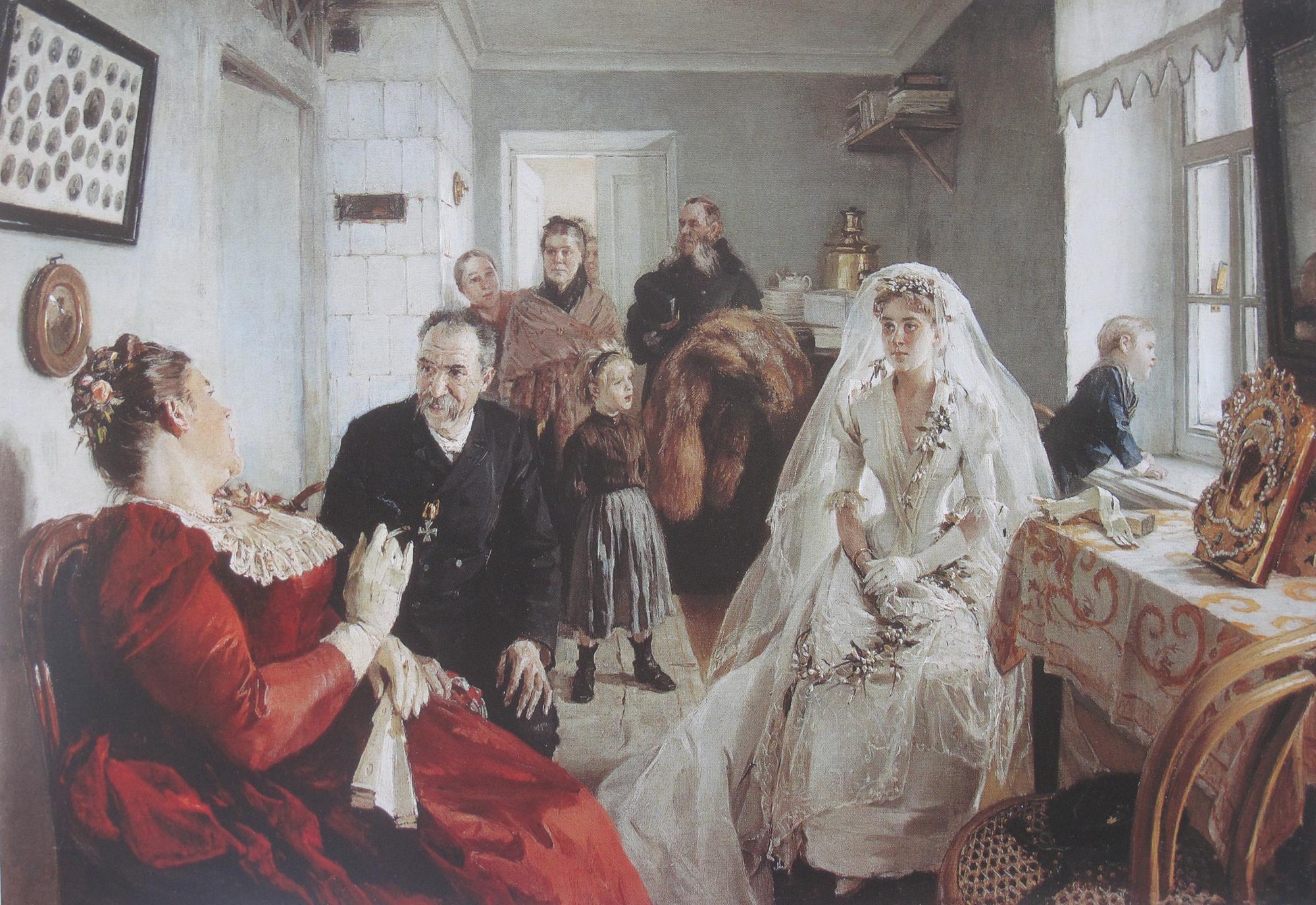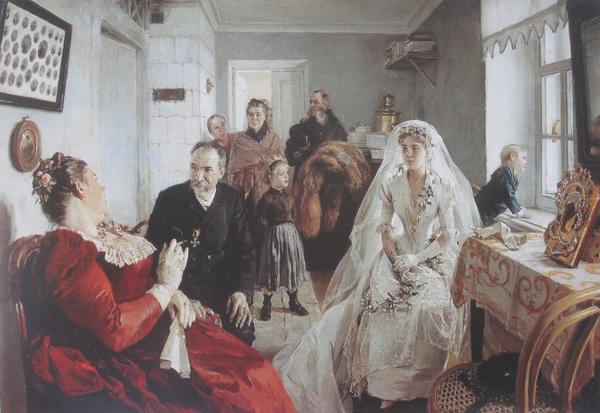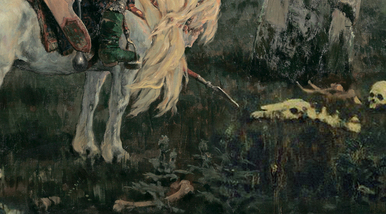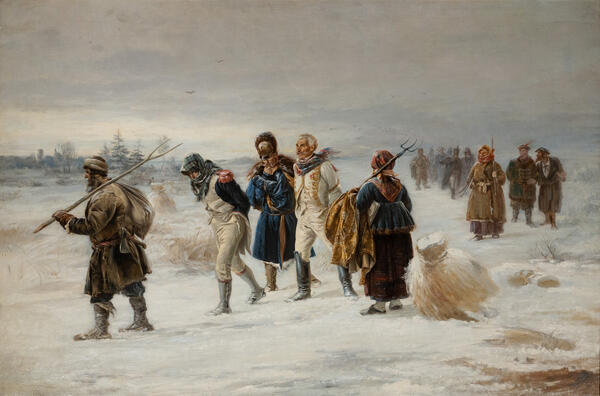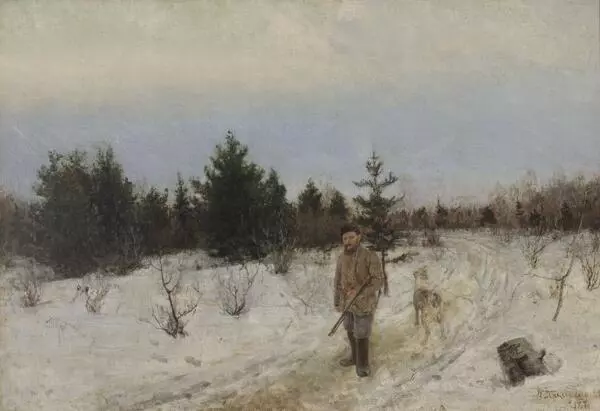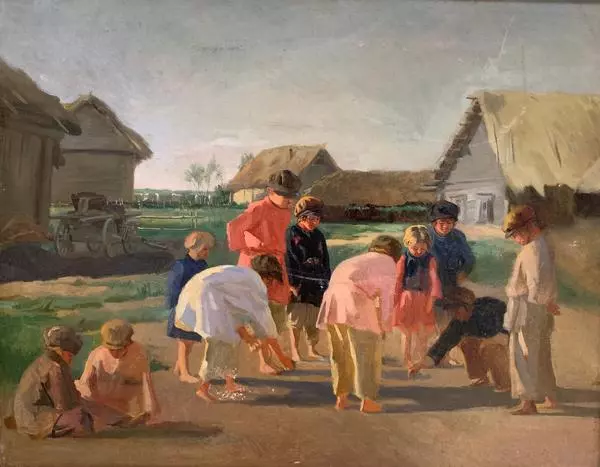Russian artist and tutor Illarion Pryanishnikov was one of the founding members of the Association of Itinerant Art Exhibitions.
The would-be genre artist learned painting from Sergey Zaryanko, Eugraph Sorokin, Apollon Mokritsky and Yegor Vasilyev. Vassily Perov also influenced the development of his style.
Pryanishnikov was an advocate of realistic art, understandable in folk environment; in his creative work, he developed the subject of the insignificant person. Lively and meaningful domestic scenes brought him earthly glory of Ostrovsky of painting.
A special place among his works is occupied by paintings on vivid subjects from life of mediocre townsfolk, landlords and merchants. Through those paintings, the artist explores a range of social topics that worried him.
The given picture displays the best values of Pryanishnikov’s manner. Skillfully arranged composition is intrinsic and rhythmical. The clear picture adds special credence to the subject. Dilute, however brisk color range is based on harmoniously arranged silver grey tones.
The artist treats the subject of unequal marriage through details adding to the contents of the painting. The household effects shown in the picture are modest but tidy. On the right-hand side of the foreground there is the bride sitting with the stiff face; her wedding dress and bridal veil are decorated with orange blossoms in accordance with the fashion of that time. All her figure expresses submission and preparedness to obey her parent’s will.
The St. George’s Cross on the chest of the bride’s father indicates that he took part in military actions. The former soldier managed to provide his daughter with adequate education, which is testified by a portrait on the left-hand wall: such portraits were typical for high-school graduate classes.
The woman in red is holding a cigarette. In those days, smoking was not popular with ladies. The woman is likely to be a merchant’s wife who is patronizing the family of modest means and who has found a decent match for the bride.
The stately footman with a fur coat in his hands looks a foreign body in the given environment. His appearance implies that the bridegroom is a man of upper classes.
In those days, pictures on unhappy brides were painted all over Europe, where funds were often accumulated in the hands of elderly men.
The painting was received by contemporaries as an experimental work of art reflecting the influence of impressionism in spite of the conservative artistic viewpoint of Pryanishnikov.
Painter and art critic Alexander Kiselev was in charge of selling the painting Waiting for the Bridesman.
The would-be genre artist learned painting from Sergey Zaryanko, Eugraph Sorokin, Apollon Mokritsky and Yegor Vasilyev. Vassily Perov also influenced the development of his style.
Pryanishnikov was an advocate of realistic art, understandable in folk environment; in his creative work, he developed the subject of the insignificant person. Lively and meaningful domestic scenes brought him earthly glory of Ostrovsky of painting.
A special place among his works is occupied by paintings on vivid subjects from life of mediocre townsfolk, landlords and merchants. Through those paintings, the artist explores a range of social topics that worried him.
The given picture displays the best values of Pryanishnikov’s manner. Skillfully arranged composition is intrinsic and rhythmical. The clear picture adds special credence to the subject. Dilute, however brisk color range is based on harmoniously arranged silver grey tones.
The artist treats the subject of unequal marriage through details adding to the contents of the painting. The household effects shown in the picture are modest but tidy. On the right-hand side of the foreground there is the bride sitting with the stiff face; her wedding dress and bridal veil are decorated with orange blossoms in accordance with the fashion of that time. All her figure expresses submission and preparedness to obey her parent’s will.
The St. George’s Cross on the chest of the bride’s father indicates that he took part in military actions. The former soldier managed to provide his daughter with adequate education, which is testified by a portrait on the left-hand wall: such portraits were typical for high-school graduate classes.
The woman in red is holding a cigarette. In those days, smoking was not popular with ladies. The woman is likely to be a merchant’s wife who is patronizing the family of modest means and who has found a decent match for the bride.
The stately footman with a fur coat in his hands looks a foreign body in the given environment. His appearance implies that the bridegroom is a man of upper classes.
In those days, pictures on unhappy brides were painted all over Europe, where funds were often accumulated in the hands of elderly men.
The painting was received by contemporaries as an experimental work of art reflecting the influence of impressionism in spite of the conservative artistic viewpoint of Pryanishnikov.
Painter and art critic Alexander Kiselev was in charge of selling the painting Waiting for the Bridesman.
